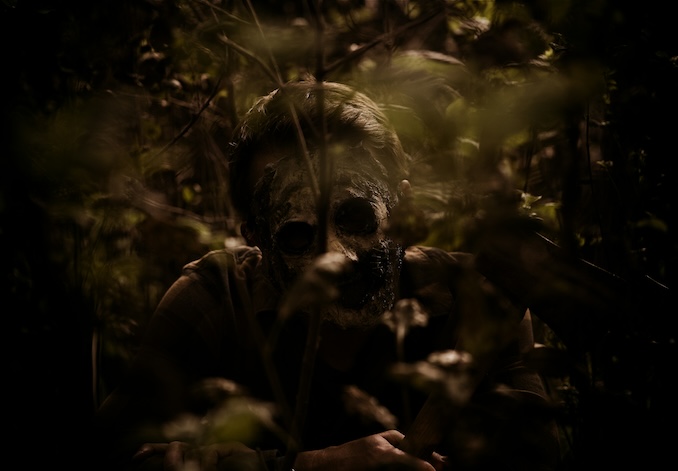“The oldest and strongest emotion of mankind is fear, and the oldest and strongest kind of fear is fear of the unknown”, wrote H.P. Lovecraft, one of horror’s most iconic figures. This quote perfectly captures the lasting allure of horror movies.

Despite evolving tastes, horror remains one of the most popular genres worldwide, captivating audiences with its ability to evoke primal fears. Horror films employ a variety of techniques to send shivers down our spines. However, there is one element that consistently proves most effective in creating true terror.
Understanding the Horror Genre
Horror movies have been haunting audiences for over a century, evolving from the silent era’s eerie shadows to the sophisticated psychological thrillers of today. Early classics like Nosferatu and Frankenstein laid the groundwork, using atmosphere and unsettling visuals to terrify viewers. Over the decades, horror has branched out, exploring everything from supernatural horrors to slasher films, each era reflecting the anxieties of its time.
What sets horror apart from other genres is its ability to tap into deep, primal fears—the fear of death, the unknown, or losing control. Unlike other genres that entertain or inspire, horror seeks to disturb, making it a unique experience that lingers in the mind long after the screen goes dark.
Common techniques in horror include jump scares that jolt the audience, the slow burn of suspense that builds unbearable tension, and the visceral shock of gore that confronts viewers with brutal realities. These methods are all effective in their own right, yet they merely scratch the surface of what truly makes horror resonate so deeply.
The Importance of Atmosphere in Horror Movies
In horror movies, atmosphere is the invisible force that shapes the entire experience. It’s the combination of setting, lighting, sound, and overall mood that creates a sense of unease long before anything truly terrifying happens on screen. The right atmosphere can turn an ordinary location into a place of dread, where every shadow seems to hide a threat, and every sound is a prelude to horror.
Atmosphere is crucial for building tension, the slow, creeping sensation that something is about to go terribly wrong. This tension keeps the audience on edge, heightening their sensitivity to fear. When the atmosphere is carefully crafted, viewers are more likely to feel the full impact of every scare, as they’ve been primed by the lingering sense of dread.
Iconic horror films like The Shining and Hereditary demonstrate the power of atmosphere. In The Shining, the Overlook Hotel, with its vast, empty halls and unsettling silence, becomes a character in its own right, amplifying the horror as Jack Torrance descends into madness. Similarly, Hereditary uses dim lighting and an oppressive soundscape to create a suffocating atmosphere, making the film’s terrifying moments all the more impactful. These films show that a well-crafted atmosphere is not just a backdrop but a key player in delivering unforgettable horror.
Blending Atmosphere with Psychological Horror
The most effective horror movies masterfully blend atmosphere with psychological manipulation to create a deeply unsettling experience. By combining these techniques, filmmakers can craft a film that not only terrifies in the moment but also lingers in the viewer’s mind long after. Atmosphere sets the stage with an eerie setting, dim lighting, and carefully chosen soundscapes, while psychological horror digs into the audience’s subconscious fears, amplifying the terror.
Sound design and horror background music play a crucial role in this blend. A haunting melody or sudden, sharp noise can heighten tension and alert the audience that something terrifying is about to unfold. The right music doesn’t just complement the visuals; it becomes a part of the fear itself, making each scene more intense and memorable.
Visual cues like flickering shadows, unsettling camera angles, and slow, deliberate reveals add another layer of psychological manipulation. These elements keep the audience on edge, always expecting something dreadful to emerge from the darkness. When combined with a carefully crafted atmosphere, these visual and auditory tools make horror films truly chilling, delivering a fear that is both immediate and deeply rooted in the viewer’s psyche.
Psychological Manipulation: The Key Element
Psychological manipulation in horror unsettles the audience by targeting their deepest fears, rather than relying on shock value. Unlike jump scares or gore, which offer fleeting frights, psychological horror uses subtle cues and mind games to create a more enduring sense of dread. It taps into the viewer’s subconscious, provoking anxiety and discomfort in ways that feel inescapably personal.
This approach exploits primal fears—fear of the unknown, loss of control, or reality unraveling—by planting seeds of doubt and paranoia. Subtle visuals, eerie sound design, and ambiguous narratives contribute to a lingering unease, making psychological manipulation the key to truly effective horror. Similarly, video games exemplify this principle through intricate soundtracks and interactive elements that enhance the psychological impact of the experience.
In conclusion, the most effective horror movies are those that skilfully manipulate the audience’s psychology, tapping into deep-seated fears through subtle, unsettling techniques.
While elements like jump scares and gore can deliver immediate frights, it’s the psychological manipulation that leaves a lasting impact, making the horror feel inescapable and deeply personal. By understanding and mastering this key element, filmmakers can create horror that not only terrifies in the moment but also haunts the mind long after the credits roll, ensuring their work remains memorable and profoundly impactful.
